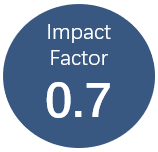Benchmarking ride-hailing regulation in global cities using mixed-method approach and social practice theory
Vol 5, Issue 2, 2021
VIEWS - 1869 (Abstract) 608 (PDF)
Abstract
Keywords
Full Text:
PDFReferences
Ajzen I (2011). “Theory of planned behaviour”. In: Van Lange PAM, Kruglanski AW and Higgins ET (Eds.), Handbook of Theories of Social Psychology, Vol. 1, pp. 438–459. https://doi.org/10.4135/9781446249215.n22
“Amy Khor on cleaner energy vehicles for ride-hailing industry [video]” (2021, March 1). Channel News Asia. https://www.channelnewsasia.com/watch/amy-khor-cleaner-energy-vehicles-ride-hailing-industry-1441561
Anair D, Martin J, Pinto de Moura MC and Goldman J (2020). Ride-Hailing’s Climate Risks: Steering a Growing Industry Toward a Clean Transportation Future. Union of Concerned Scientists.
Association of Women for Action and Research (AWARE) (2020, December 2). AWARE’s Sexual Assault Care Centre Saw 140 Cases of Technology-Facilitated Sexual Violence in 2019, the Most Ever in One Year [Press release]. Association of Women for Action and Research. https://www.aware.org.sg/2020/12/awares-sexual-assault-care-centre-saw-140-cases-of-technology-facilitated-sexual-violence-in-2019-the-most-ever-in-one-year/
Cairns S, Harmera C, Hopkin and Skippon S (2014). “Sociological perspectives on travel and mobilities: A review”. Transportation Research Part A: Policy and Practice, 63: 107–117. https://doi.org/10.1016/j.tra.2014.01.010
California State Legislature (2018). SB-1014 California Clean Miles Standard and Incentive Program: Zero-Emission Vehicles. California State Legislature. https://leginfo.legislature.ca.gov/faces/billTextClient.xhtml?bill_id=201720180SB1014
“Chicago proposes new TNC fees that would improve equity and sustainability” (2019, October 18). Center for Neighborhood Technology (CNT). https://www.cnt.org/blog/chicago-proposes-new-tnc-fees-that-would-improve-equity-and-sustainability
Ching SH (2017). Disruptive Technologies in the Land Transport Sector: A Case Study on Regulating Ridesharing Platforms. Institute of Governance and Policy.
City of New York (n.d.). Chapter 59: For-Hire Service. City of New York.
City of Toronto (n.d.). Toronto Municipal Code: Chapter 546–Licensing of Vehicles-For-Hire. City of Toronto.
_____ (2019). Review of the City of Toronto Municipal Code, Chapter 546, Licensing of Vehicles-for-Hire (Report GL6.31). City of Toronto.
“City of Toronto unveils taxi relief program” (2021, February 20). CityNews. https://toronto.citynews.ca/2021/02/20/city-of-toronto-unveils-taxi-relief-program/
Cook C, Diamond R, Hall JV, et al. (2020). “The gender earnings gap in the gig economy: Evidence from over a million rideshare drivers”. The Review of Economic Studies, 88(5): 2210–2238. https://doi.org/10.1093/restud/rdaa081
de Montjoye Y-A, Hidalgo CA, Verleysen M and Blondel VD (2013). “Unique in the crowd: The privacy bounds of human mobility”. Scientific Reports, 3(1): Art. 1376. https://doi.org/10.1038/srep01376
Estache A and de Rus G (2008). “The regulation of transport infrastructure and services: A conceptual overview”. In: Estache A and de Rus G (Eds.), Privatization and Regulation of Transport Infrastructure: Guidelines of Policymakers and Regulators, pp. 5–50. World Bank.
Farren M, Koopman C and Mitchell M (2016). Rethinking Taxi Regulations: The Case for Fundamental Reform. Mercatus Center. https://doi.org/10.2139/ssrn.2838918
Fingas J (2020, November 29). “India’s new ride hailing rules cap driver hours and limit surge pricing”. Engadget. https://www.engadget.com/india-ridesharing-Ridehailing-rules-211029817.html
Giddens A (1984). The Constitution of Society: Outline of the Theory of Structuration. University of California Press.
“Go-Jek prepared to further dominate Indonesia” (n.d.). The ASEAN Post. https://theaseanpost.com/article/go-jek-prepared-further-dominate-indonesia
Hall JV and Krueger AB (2017). “An analysis of the labor market for Uber’s driver-partners in the United States”. ILR Review, 71(3): 705–732. https://doi.org/10.1177/0019793917717222
Hamdi N, Mourad M and Knecht E (2018, May 8). “Egypt passes law regulating Uber, Careem ride-sharing services”. Reuters. https://www.reuters.com/article/us-egypt-uber/egypt-passes-law-regulating-uber-careem-ride-sharing-services-idUSKBN1I81VG
Hingorani S (2020, September 1). “Commentary: Does the ride-hailing industry have a sexual harassment problem?”. Channel News Asia. https://www.channelnewsasia.com/news/commentary/grab-molest-sexual-assault-harassment-foodpanda-gojek-ride-hail-13068500
Ho T (2017, March 21). “3 full-time professions in Singapore where driving private-hire car makes financial sense”. Dollars and Sense. https://dollarsandsense.sg/3-full-time-professions-singapore-driving-private-hire-car-makes-financial-sense/
Lee C (2016). To Uberize or Not to Uberize? Opportunities and Challenges in Southeast Asia’s Sharing Economy. Yusof Ishak Institute.
Lin D (2019, June 17). “Didi gongbu fang pilao jiashi guize: Siji chao shichang jiang bei qiangzhi xiuxi [Didi announces anti-fatigue driving rules: Drivers will be forced to rest for extended periods of time]”. Huánqiú–Global Times. https://3w.huanqiu.com/a/c36dc8/7NzVj9qMwtW?agt=20.1
Metcalfe R and Dolan P (2012). “Behavioural economics and its implications for transport”. Journal of Transport Geography, 24: 503–511. https://doi.org/10.1016/j.jtrangeo.2012.01.019
Mikhailova L (2018, November 28). “Yandeks. Taksi budet nakazyvat’ voditeley za regulyarnoye prevysheniye skorosti [Yandex.Taxi will punish drivers for regularly exceeding speed]”. VC.ru. https://vc.ru/transport/52001-yandeks-taksi-budet-nakazyvat-voditeley-za-regulyarnoe-prevysh-enie-skorosti
“Multi purpose taxi program” (n.d.). Carers Victoria. https://cpv.vic.gov.au/passengers/mptp
Murphy M (2021, March 22). “Sadiq Khan urges ‘all private hire operators’ to pay their drivers the London living wage”. TaxiPoint. https://www.taxi-point.co.uk/post/sadiq-khan-urges-all-private-hire-operators-to-pay-their-drivers-the-london-living-wage
Palliyani S and Lee D-H (2017). “Sustainable transport policy—An evaluation of Singapore’s past, present and future”. Journal of Infrastructure Policy and Development, 1(1): 112–128. https://doi.org/10.24294/jipd.v1i1.23
Panayotopoulos A (2018, March 22). “Meituan Dache: The other ride-sharing app”. SmartShanghai. https://www.smartshanghai.com/articles/tech/tested-meituan-dache-the-other-ride-sharing-app
“Parliament passes three Labour bills: Here are the key changes [video]” (2020, September 23). The Economic Times. https://economictimes.indiatimes.com/news/economy/policy/3-labour-reform-bills-in-parliament-here-are-the-key-changes/videoshow/78251741.cms
Peters BG (1998). “Managing horizontal government: The politics of co-ordination”. Public Administration, 76(2): 295–311. https://doi.org/10.1111/1467-9299.00102
Powell WW (1990). “Neither market nor hierarchy: Network forms of organization”. Research in Organizational Behaviour, 12: 295–336.
Helling B (2018). “Ridester’s 2018 independent driver earnings survey”. Ridester. https://www.ridester.com/2018-survey/
Rhodes RAW (2002). “New Labour’s civil service: Summing up joining-up”. The Political Quarterly, 71(2): 151–166. https://doi.org/10.1111/1467-923X.00290
Said C (2021, April 5). “Uber may stop letting drivers see destinations and name prices”. San Francisco Chronicle. https://www.sfchronicle.com/business/article/Uber-may-stop-letting-drivers-see-destinations-16078491.php
Schaller B (2018, July 25). The New Automobility: Lyft, Uber and the Future of American Cities. Schaller Consulting.
Shestoperov D (2019, September 23). “Taksystam pereklyuchayut peredachu [Taxi drivers change gear]”. Kommersant. https://www.kommersant.ru/doc/4101863
Shove E, Pantzar M and Watson M (2012). The Dynamics of Social Practice: Everyday Life and How It Changes. Sage Publications. https://doi.org/10.4135/9781446250655
State Government of Victoria (n.d.). “A New Industry. A New Approach to Regulation”. State Government of Victoria, Australia.
Straughan PT and Tadai ME (2016). “Addressing the implementation gap in flexiwork policies: The case of part-time work in Singapore”. Asia Pacific Journal of Human Resources, 56(2): 155–174. https://doi.org/10.1111/1744-7941.12126
“Taxi drivers’ protest provokes commuter backlash” (2019, October 8). Mexico News Daily. https://mexiconewsdaily.com/news/taxi-drivers-protest-provokes-commuter-backlash/
Toh TW (2020, November 1). “Grab to phase out cars over 10 years old by July 2022”. The Straits Times. https://www.straitstimes.com/singapore/transport/grab-to-phase-out-cars-over-10-years-old-by-july-2022
“Uber drivers are entitled to worker rights, UK’s top court rules” (2021, February 20). The Straits Times. https://www.straitstimes.com/world/europe/uber-drivers-are-entitled-to-worker-rights-uks-top-court-rules-0
Williams DG (2015). Social Practice Theory and Sustainable Mobility: An Analysis of the English Local Transport Planning as a System of Provision [Doctoral thesis, University of the West of England]. UWE Repository.
DOI: https://doi.org/10.24294/jipd.v5i2.1338
Refbacks
- There are currently no refbacks.
Copyright (c) 2021 Sreyus Palliyani, Der-Horng Lee

This work is licensed under a Creative Commons Attribution-NonCommercial 4.0 International License.

This site is licensed under a Creative Commons Attribution 4.0 International License.










